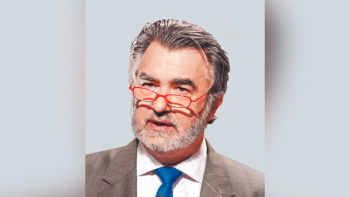
- Applied Clinical Trials-03-01-2021
- Volume 30
- Issue 3
COVID-19 Vaccine Makers Overcome Challenges to Ramp Up Production
Vaccine manufacturers anticipate significant boosts in output in the coming weeks.
Despite shortages in critical components and experienced staff, vaccine manufacturers anticipate significant boosts in output in the coming weeks for these innovative products. The companies with the first Emergency Use Authorizations (EUAs) for vaccines to combat the pandemic produced only 63.7 million doses as of January 31, 2021, far less than the initial goal of 300 million doses, raising skepticism of even meeting the 200 million-dose goal for the end of March 2021. But in recent weeks, the prospects for greater vaccine output have brightened, and the entry of Johnson & Johnson into the market should help. To prevent future production delays of critical products, the Biden administration is examining supply chain vulnerabilities for pharmaceutical ingredients as part of a longer-range consideration of products important to public health.
Efforts to expand production of vaccines to combat COVID-19 have had to overcome a wide range of shortages in materials, qualified facilities, and experienced workers such as engineers and quality control managers. A particular problem is scarce supplies of the ionized lipid nanoparticles needed for the Pfizer-BioNTech and Moderna mRNA vaccines. Only a handful of companies previously produced very small amounts of lipids, most for clinical trials involving rare disease treatments. More contract manufacturers now are licensing the lipid technology, but production scale-up has been a slow process. In addition, finish-fill operations have emerged as serious bottlenecks due to shortages affecting key components for new and revised operating lines plus requirements for high levels of sterility.
At a recent hearing before the House Energy & Commerce subcommittee on Oversight & Investigations, leading vaccine makers outlined efforts to enhance production and packaging processes. Pfizer Chief Business Officer John Young summarized company plans for boosting vaccine shipments from 5 million to 13 million doses per week by the middle of March. Similarly, Moderna President Stephen Hoge outlined efforts to deliver millions of doses by the end of March and other increases leading to a total of 700 million doses this year.
Johnson & Johnson now expects to provide 100 million doses of its single-dose adenovirus vaccine by the end of June 2021, starting with 20 million doses by late March, following FDA granting EUA for the product. Janssen Vice President Richard Nettles described for the House committee how the company had to assess nearly 100 potential production sites to find eight able to support its accelerated development timeline. Drug substance production takes about two months and is being done at Emergent BioSolutions in Maryland and at Janssen’s Netherlands plant and another facility in India, Nettles explained. And another five to six weeks are needed to produce, test and release the drug product, which is occurring at US sites in Indiana, Michigan and Pennsylvania, plus operations in Spain, Italy, India and Africa.
Pfizer/BioNTech now projects 2021 global production to reach 2 billion doses, almost double early estimates. Some of that increase is due to FDA approval for extracting six doses per vial, as opposed to five doses originally approved. Pfizer CEO Albert Bourla provided further details on company production scale-up in conjunction with President Joe Biden’s visit to Pfizer’s Kalamazoo, MI manufacturing facility on February 19, 2021. Bourla cited plans to add new formulation suites and lipid production in Kalamazoo and at its research site in Groton, CT. Additional finish/fill lines have been established at its McPherson, KS site. This expansion, together with contracts with two additional US contract manufacturers and improved processes, will enable Pfizer to reduce the time needed to produce vial-ready product from 110 days to 60 days. Innovations involve doubling batch size to increase yield and utilizing more efficient lab test methods to reduce release times.
In addition, Pfizer’s vaccine will be easier to ship and store with FDA approval of higher temperatures–that is sub-zero (-15 to -25C), as opposed to the ultra-cold level initially authorized. That change is based on stability studies conducted over the past nine months and should facilitate distribution to pharmacies and smaller health facilities.
Moderna’s production gains arise from added efficiencies in creating batches of the drug substance at its facility in Norwood, MA and at the Portsmouth, NH plant operated by contract manufacturing partner, Lonza, Ltd. Moderna also is expanding its fill-finish process agreement with Catalent and looking to contract with another partner. And the company expects to speed up manufacturing runs with FDA approval of providing 15 doses per vial, filling up the empty space in vials that currently hold 10 doses.
The difficulties for manufacturers in securing critical ingredients for vaccine production, packaging and delivery has prompted the Biden administration to assess the situation. In an Executive Order issued Feb. 24, 2021, President Biden initiated a comprehensive review of supply chain risks for active pharmaceutical ingredients. The aim is to identify factors underlying shortages and supply interruptions of these products and steps the government can take to address relevant problems in the short term.
Jill Wechsler is Applied Clinical Trials' Washington Correspondent
Articles in this issue
almost 5 years ago
Clinical Trials and Trustalmost 5 years ago
Accelerating Clinical Trial Design and Operationsalmost 5 years ago
Taking eClinical to the Next Levelalmost 5 years ago
ePRO and Ensuring Data Integrityalmost 5 years ago
Plan the Flow of Data Early for Maximum Effectalmost 5 years ago
Applied Clinical Trials March 2021 Issue (PDF)almost 5 years ago
A Bevy of COVID-Tested Successesalmost 5 years ago
The Road to True Data Harmonizationalmost 5 years ago
Europe's Leaders Still Discussing How to Respond to the COVID PandemicNewsletter
Stay current in clinical research with Applied Clinical Trials, providing expert insights, regulatory updates, and practical strategies for successful clinical trial design and execution.




